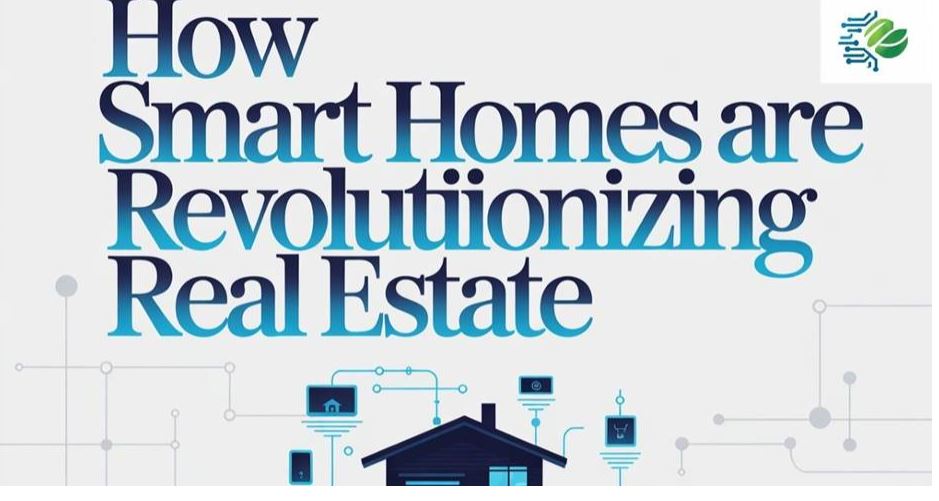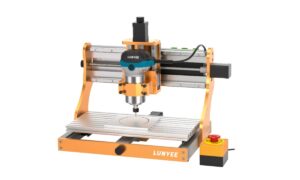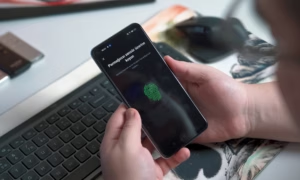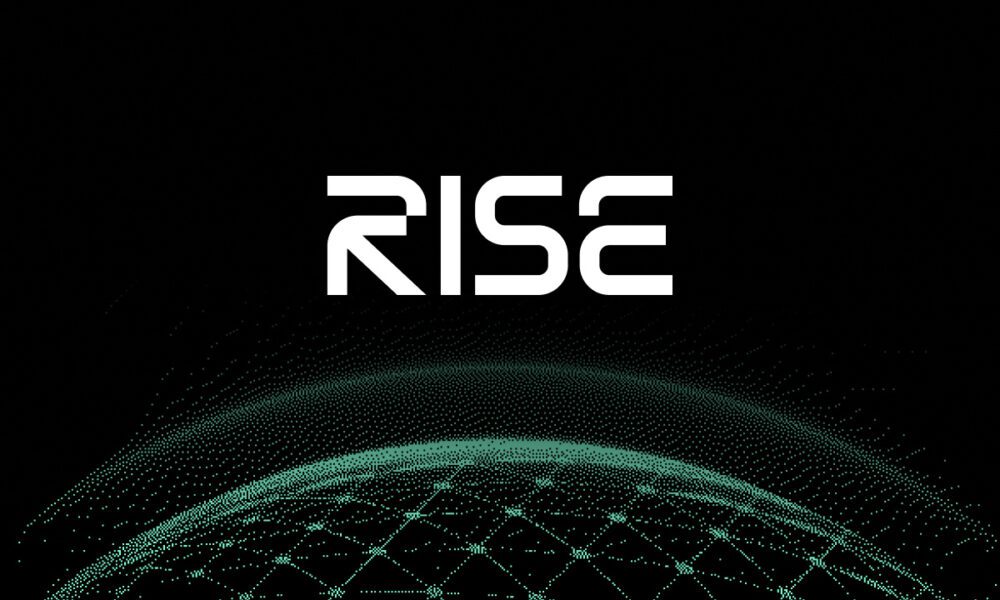In 2025, smart home technology is transforming how people buy, sell, and live in homes across the USA. With the power of the Internet of Things (IoT) and home automation systems, real estate is shifting from traditional living spaces to fully connected devices that offer convenience, safety, and efficiency.
Modern buyers now look for homes that feature smart thermostats and HVAC automation, real-time control, and energy management. These innovations are not just enhancing comfort but also increasing property values. As more homeowners adopt sustainable smart living, the real estate industry continues to evolve ushering in an era of intelligent, adaptive, and data-driven homes.
Understanding Smart Homes and IoT Integration
To understand what is IoT in smart homes, imagine a web of small devices thermostats, cameras, sensors, and lights all connected via the internet. This web creates a system of intelligent home automation that responds to your daily habits.
How IoT works in homes is simple but powerful. Each device in your home automation system has built-in IoT sensors and actuators. These tools collect data, send it through Wi-Fi or Bluetooth (known as IoT protocols like Wi-Fi, Bluetooth, Zigbee), and react automatically to your needs. For example, when you leave the house, the system can turn off lights and lock doors on its own.
In the USA, this has become a symbol of modern living. The IoT home ecosystem explained is not only about convenience it’s about control, safety, and efficiency. With AI-powered home assistants, homes are now able to learn from users and predict their needs.
How Smart Home Technology Adds Value to Real Estate
One of the biggest benefits of smart home technology is its ability to increase property value. U.S. real estate agents report that homes equipped with IoT-enabled devices sell faster and attract higher offers.
Buyers see more value in properties that offer real-time home monitoring and data encryption and network security. It gives them confidence that both their physical and digital safety are protected. According to a 2024 Zillow report, 67% of homebuyers said they would pay extra for homes featuring home automation and IoT security.
This shows how the impact of IoT on real estate goes beyond comfort it’s also driving market growth and shaping buyer decisions.
Energy Efficiency and Sustainability Benefits
Energy-efficient smart homes are leading the way toward sustainable smart living. Using smart lighting solutions and home energy management systems (HEMS), U.S. homeowners can cut energy use by up to 30%.
These IoT devices examples automatically adjust lighting or temperature based on your presence. Smart thermostats can learn your schedule, while cloud-based home systems track and analyze your energy use in real time.
The U.S. government also supports sustainable housing with incentives for smart, eco-friendly systems. This trend proves that integration of AI and IoT not only saves money but also protects the environment. As energy prices rise, adaptive home technology becomes even more valuable.
Enhancing Safety and Security Through Smart Systems
Home security systems are one of the strongest reasons why Americans are upgrading to smart living. With smart locks and cameras, you can see who’s at your door from anywhere.
Modern IoT-enabled security features include remote home monitoring systems, motion sensors, and real-time alerts through home control apps. For digital safety, data encryption and network security protect users from cyber threats.
This combination of digital home safety and physical protection has made home automation and IoT security a major selling point in real estate. Buyers want peace of mind, and smart technology provides it 24/7.
Smart Living and Lifestyle Upgrades
Voice-controlled smart homes are changing how people experience comfort. Imagine adjusting lighting, temperature, or even playing music just by speaking. Artificial intelligence in smart homes makes this possible by analyzing your patterns and preferences.
These upgrades are not just for luxury; they are becoming part of everyday American life. Intelligent home automation brings simplicity less manual work, more efficiency. With 5G and machine learning in home automation, devices respond faster and become smarter with time.
This blend of convenience and innovation is creating the future of connected living where every task feels effortless.
Smart Home Technology in Multifamily Housing
In U.S. cities like Austin, Seattle, and Miami, smart home technology is spreading quickly in apartments and condos. Multifamily housing projects are adopting IoT-enabled devices for both residents and property managers.
Residents enjoy features like remote home monitoring systems and automatic maintenance alerts. Managers use predictive maintenance in smart homes to identify issues before they become costly.
This transformation makes apartment living more attractive, efficient, and secure driving a new wave of innovation in the rental market.
How Real Estate Developers Are Embracing Tech Trends
Developers across the U.S. are now integrating smart home technology during construction. Builders like Lennar and Toll Brothers partner with IoT innovation companies (like TDK) to offer ready-made smart home packages.
These packages include smart lighting solutions, AI-powered home assistants, and smart thermostats. Developers understand that buyers now expect cloud-based home systems and connected devices as standard features.
The adoption of 5G connectivity also helps improve IoT performance, making homes faster and more reliable. For developers, this shift isn’t optional it’s the future of real estate design and marketing.
Challenges and Considerations for Homebuyers and Developers
Despite the benefits, there are some challenges in adopting home automation systems. One issue is compatibility not all IoT devices examples work with each other. Another is cybersecurity, as poorly protected devices can risk data leaks.
Developers must also consider costs. While energy-efficient smart homes save money long-term, installation and maintenance can be expensive at first. However, the growing demand in the U.S. market suggests these investments are worth it.
Experts advise choosing systems with strong data encryption, and clear IoT components: sensors, actuators, connectivity to ensure performance and security.
The Future of Smart Real Estate
By 2025, smart home trends show rapid growth. With 5G impact on IoT performance, devices are becoming more responsive and intelligent. Artificial intelligence in smart homes will analyze user behavior to predict needs even before user’s act.
The future will also include integration of AI and IoT with blockchain and AR/VR technologies. Cities across the U.S. are planning entire smart home ecosystems, leading to the future of connected living.
In this future, home automation systems will be a necessity, not a luxury making every house smarter, safer, and more efficient.
Conclusion The Smart Way Forward
Smart homes are revolutionizing real estate in the United States by blending comfort, safety, and efficiency into one intelligent package. They are driving a major change in how properties are built, bought, and lived in.
From IoT-enabled devices and home automation systems to AI-powered home assistants, the smart home revolution is here to stay. Homeowners and investors who embrace this shift today will lead the future of connected living tomorrow.
As the world moves forward, one thing is clear: the future of smart real estate is not just about technology it’s about creating homes that understand and care for the people who live in them.
FAQ’s
1.What is a smart house:
A smart house is a home equipped with IoT-enabled devices that can be controlled remotely to improve convenience, security, and energy efficiency.
2.Components of a smart house:
Main components include sensors, actuators, smart lighting, thermostats, security systems, and voice assistants connected through the internet.
3.Smart house project for students:
Students can create a mini home automation system using Arduino or Raspberry Pi to control lights, fans, or door locks via smartphone or voice commands.
4.Smart home ecosystem:
It’s a network of connected devices and home automation systems that communicate through Wi-Fi, Bluetooth, or Zigbee for seamless smart living.
5.Smart home infrastructure:
It includes the network connectivity, cloud-based systems, and IoT sensors that enable real-time communication between devices in a home.
Meta Description
Discover how smart homes are revolutionizing real estate with IoT, automation, and AI-driven technology for modern living.
How Smart Homes Are Revolutionizing
Real Estate in 2025
In 2025, smart home technology is transforming how people buy, sell, and live in homes across the USA. With the power of the Internet of Things (IoT) and home automation systems, real estate is shifting from traditional living spaces to fully connected devices that offer convenience, safety, and efficiency.
Modern buyers now look for homes that feature smart thermostats and HVAC automation, real-time control, and energy management. These innovations are not just enhancing comfort but also increasing property values. As more homeowners adopt sustainable smart living, the real estate industry continues to evolve ushering in an era of intelligent, adaptive, and data-driven homes.
Understanding Smart Homes and IoT Integration
To understand what is IoT in smart homes, imagine a web of small devices thermostats, cameras, sensors, and lights all connected via the internet. This web creates a system of intelligent home automation that responds to your daily habits.
How IoT works in homes is simple but powerful. Each device in your home automation system has built-in IoT sensors and actuators. These tools collect data, send it through Wi-Fi or Bluetooth (known as IoT protocols like Wi-Fi, Bluetooth, Zigbee), and react automatically to your needs. For example, when you leave the house, the system can turn off lights and lock doors on its own.
In the USA, this has become a symbol of modern living. The IoT home ecosystem explained is not only about convenience it’s about control, safety, and efficiency. With AI-powered home assistants, homes are now able to learn from users and predict their needs.
How Smart Home Technology Adds Value to Real Estate
One of the biggest benefits of smart home technology is its ability to increase property value. U.S. real estate agents report that homes equipped with IoT-enabled devices sell faster and attract higher offers.
Buyers see more value in properties that offer real-time home monitoring and data encryption and network security. It gives them confidence that both their physical and digital safety are protected. According to a 2024 Zillow report, 67% of homebuyers said they would pay extra for homes featuring home automation and IoT security.
This shows how the impact of IoT on real estate goes beyond comfort it’s also driving market growth and shaping buyer decisions.
Energy Efficiency and Sustainability Benefits
Energy-efficient smart homes are leading the way toward sustainable smart living. Using smart lighting solutions and home energy management systems (HEMS), U.S. homeowners can cut energy use by up to 30%.
These IoT devices examples automatically adjust lighting or temperature based on your presence. Smart thermostats can learn your schedule, while cloud-based home systems track and analyze your energy use in real time.
The U.S. government also supports sustainable housing with incentives for smart, eco-friendly systems. This trend proves that integration of AI and IoT not only saves money but also protects the environment. As energy prices rise, adaptive home technology becomes even more valuable.
Enhancing Safety and Security Through Smart Systems
Home security systems are one of the strongest reasons why Americans are upgrading to smart living. With smart locks and cameras, you can see who’s at your door from anywhere.
Modern IoT-enabled security features include remote home monitoring systems, motion sensors, and real-time alerts through home control apps. For digital safety, data encryption and network security protect users from cyber threats.
This combination of digital home safety and physical protection has made home automation and IoT security a major selling point in real estate. Buyers want peace of mind, and smart technology provides it 24/7.
Smart Living and Lifestyle Upgrades
Voice-controlled smart homes are changing how people experience comfort. Imagine adjusting lighting, temperature, or even playing music just by speaking. Artificial intelligence in smart homes makes this possible by analyzing your patterns and preferences.
These upgrades are not just for luxury; they are becoming part of everyday American life. Intelligent home automation brings simplicity less manual work, more efficiency. With 5G and machine learning in home automation, devices respond faster and become smarter with time.
This blend of convenience and innovation is creating the future of connected living where every task feels effortless.
Smart Home Technology in Multifamily Housing
In U.S. cities like Austin, Seattle, and Miami, smart home technology is spreading quickly in apartments and condos. Multifamily housing projects are adopting IoT-enabled devices for both residents and property managers.
Residents enjoy features like remote home monitoring systems and automatic maintenance alerts. Managers use predictive maintenance in smart homes to identify issues before they become costly.
This transformation makes apartment living more attractive, efficient, and secure driving a new wave of innovation in the rental market.
How Real Estate Developers Are Embracing Tech Trends
Developers across the U.S. are now integrating smart home technology during construction. Builders like Lennar and Toll Brothers partner with IoT innovation companies (like TDK) to offer ready-made smart home packages.
These packages include smart lighting solutions, AI-powered home assistants, and smart thermostats. Developers understand that buyers now expect cloud-based home systems and connected devices as standard features.
The adoption of 5G connectivity also helps improve IoT performance, making homes faster and more reliable. For developers, this shift isn’t optional it’s the future of real estate design and marketing.
Challenges and Considerations for Homebuyers and Developers
Despite the benefits, there are some challenges in adopting home automation systems. One issue is compatibility not all IoT devices examples work with each other. Another is cybersecurity, as poorly protected devices can risk data leaks.
Developers must also consider costs. While energy-efficient smart homes save money long-term, installation and maintenance can be expensive at first. However, the growing demand in the U.S. market suggests these investments are worth it.
Experts advise choosing systems with strong data encryption, and clear IoT components: sensors, actuators, connectivity to ensure performance and security.
The Future of Smart Real Estate
By 2025, smart home trends show rapid growth. With 5G impact on IoT performance, devices are becoming more responsive and intelligent. Artificial intelligence in smart homes will analyze user behavior to predict needs even before user’s act.
The future will also include integration of AI and IoT with blockchain and AR/VR technologies. Cities across the U.S. are planning entire smart home ecosystems, leading to the future of connected living.
In this future, home automation systems will be a necessity, not a luxury making every house smarter, safer, and more efficient.
Conclusion The Smart Way Forward
Smart homes are revolutionizing real estate in the United States by blending comfort, safety, and efficiency into one intelligent package. They are driving a major change in how properties are built, bought, and lived in.
From IoT-enabled devices and home automation systems to AI-powered home assistants, the smart home revolution is here to stay. Homeowners and investors who embrace this shift today will lead the future of connected living tomorrow.
As the world moves forward, one thing is clear: the future of smart real estate is not just about technology it’s about creating homes that understand and care for the people who live in them.
FAQ’s
1.What is a smart house:
A smart house is a home equipped with IoT-enabled devices that can be controlled remotely to improve convenience, security, and energy efficiency.
2.Components of a smart house:
Main components include sensors, actuators, smart lighting, thermostats, security systems, and voice assistants connected through the internet.
3.Smart house project for students:
Students can create a mini home automation system using Arduino or Raspberry Pi to control lights, fans, or door locks via smartphone or voice commands.
4.Smart home ecosystem:
It’s a network of connected devices and home automation systems that communicate through Wi-Fi, Bluetooth, or Zigbee for seamless smart living.
5.Smart home infrastructure:
It includes the network connectivity, cloud-based systems, and IoT sensors that enable real-time communication between devices in a home.





























